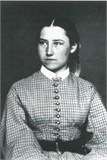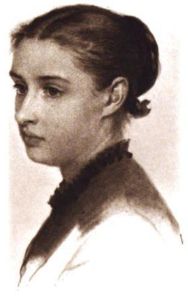2023 Women’s History Month Chat, Part 1
Earlier this month, JoAnna M. McDonald, Sheritta Bitikofer, Meg Groeling, Cecily Nelson Zander, and Sarah Kay Bierle gathered virtually to chat and celebrate Women’s History Month. We took some notes from a few of the discussion topics we discussed and hope you’ll enjoy Part 1 and Part 2 of the conversation!
Topic: Let’s highlight a “woman behind the man” and how she supported or influenced – so a wife, mother, sister, friend, etc., who provided motivation, comfort, and kinship to their husbands, brothers, and sons as they were on the front lines.

JoAnna: I’d like to mention Anne Hill Carter Lee (the woman with three last names). She was Robert E. Lee’s mother and a very tough woman. She had to raise 5 kids, basically on her own because her husband was a drunk, gambler, and mostly absent. In 1818, her husband died, leaving her a widow at age 45. Anne struggled with health difficulties and had a mental and physical breakdown; her son took care of her. Noticing his caring attitude, Anne wanted Lee to become a doctor, but the family did not have the finances for him to pursue that career. Instead, Lee went to West Point Military Academy. Anne died in 1829, not living to see that son graduate and commission. I see a lot of Anne’s influence when I study Robert E. Lee’s character, and he recognized his mother’s influence on his life, too. There are a few biographies about Anne Hill Carter Lee, but there is certainly more to explore and highlight about her life and influences.

Sheritta: I’ll reframe the phrase and talk about a woman who was “alongside the men”: Sarah Rosetta Wakeman. She was born in New York in 1843 and part of a large and poor family. Her father tried to force her into an arranged marriage when she was a teenager, prompting Sarah to run away from home. She dressed as a man and found work. In August 1862, she enlisted in the 153rd New York Infantry and received a bounty for joining the regiment. Her female identity was not discovered, and Sarah fought in the Red River Campaign during 1864. She contracted dysentery and died, presumably still unidentified as a woman. She is buried at Chalmette Battlefield Cemetery, and the name on her gravestone is “Lyons Wakeman.” Sarah Wakeman’s story reminds me that women of the Civil War era did not have to be pigeonholed into specific roles. She is an example of a woman taking an unconventional role. She did write letters home and some of them have been published!

Meg: I’ve always been intrigued by women who were married to problematic generals and who had to stand by their men. I mean think about Benjamin Butler…he’s like one of the least attractive men of the Civil War, but he never lacked the confidence to do what he saw as right. Think about the confidence and support that Sarah Butler must have given him. (They married in 1844.) Think about all the groundbreaking things he started or advocated for: paying workers a more living wage at his mill, governor of Massachusetts, freedmen’s association. I think Ben Butler really had a true compass as a human; that didn’t mean he was necessarily a great general, but he’s one of the underrated people of the 19th Century. He was not a hottie, but Mrs. Butler stood by him, raised their children, and made sure nothing in family reflected poorly on him. She made success out of that…for both of them.

Sarah: I think sometimes it’s easy to overlook the influence sisters’ influence. I love reading letter collections, and it’s always nice to find the correspondence of siblings and explore the dynamics of that family relationship. For example, Private William P. Lamson of the 20th Maine wrote frequently to his sister, Martha Jane Haven Lamson, better known as “Jennie.” Jennie was 14 and Will was 18 when he enlisted in 1862. The four year age gap and sibling relationship allowed Will to both confide to and advise his younger sister. He generally did not tell her about battles, but he kept a connection to home through her and she seems to have kept him updated on family happenings and the hometown news. He did give her advice during the two years of writing, and may have even been answering a romantic interest question in his last letter when he clearly replied to her inquiry about a drummer in his regiment. (Speaking of match-making siblings during the Civil War, don’t forget Colonel Joseph Thoburn’s “catalog” of staff officers that he sent for his single sister!) A more notable member of the 20th Maine—Joshua Lawrence Chamberlain—wrote to his sister, Sarah, and at times relied on her to look after his children while he was at war. There are a lot of other examples of sibling support and letters, but I’ll wrap it here for the sake of time.

Cecily: I’m going to go with Josephine Shaw Lowell, sister of Robert Gould Shaw, killed in assault on Fort Wagner in 1863 and Charles Russell Lowell, who died of wounds sustained at the battle of Cedar Creek in 1864. Lowell was a very privileged person, but she also experienced a great deal of hardship. I especially admire her determination to make a difference and her pursuit of social reform after the war.
To be continued…

… and imagine poor Mrs. General McClellan. Not only did she have to put up with George, she had a new baby to take care of!
The image at the top: Isn’t that thought to be a portrait of R.E. Lee’s daughter, Anne Carter Lee, rather than his mother?